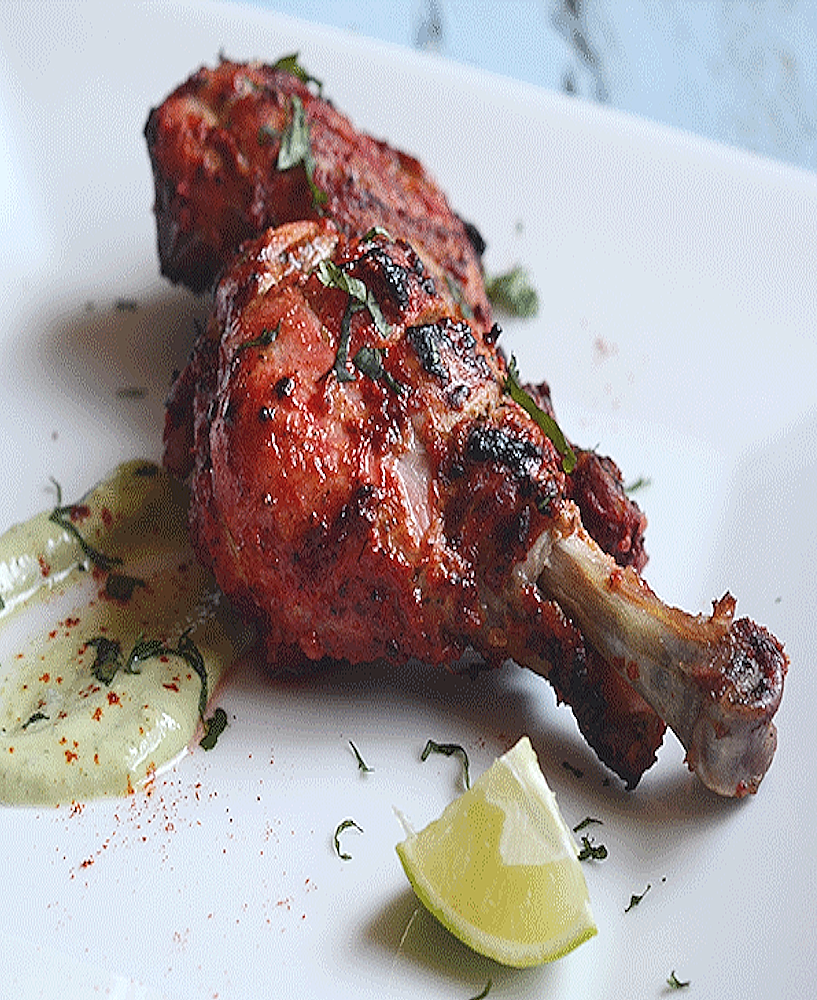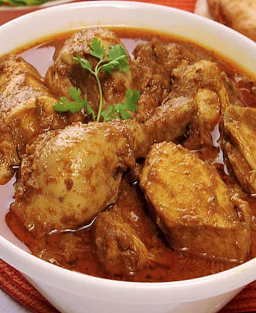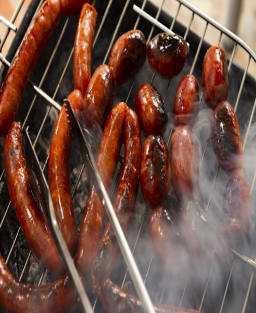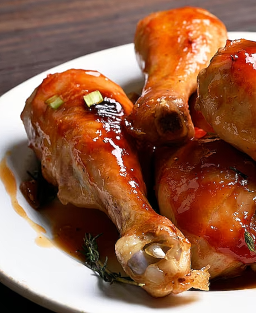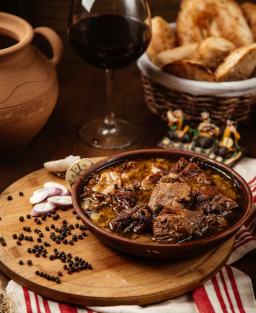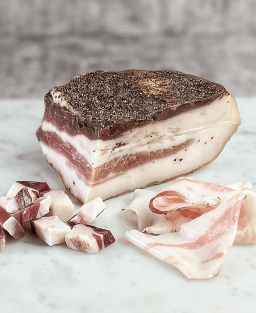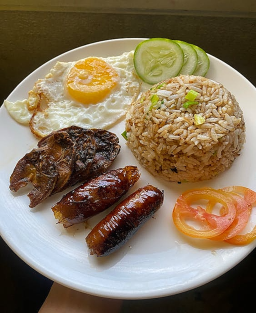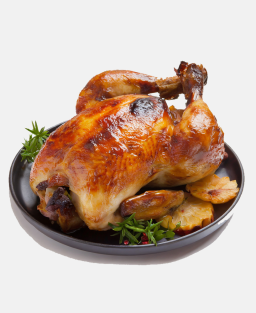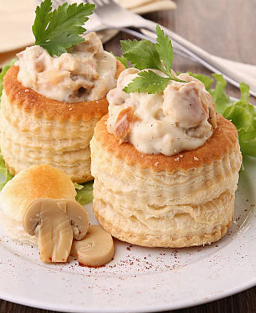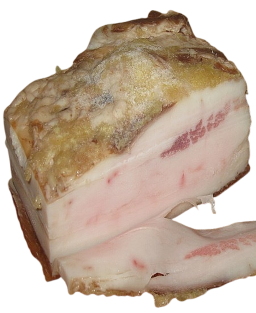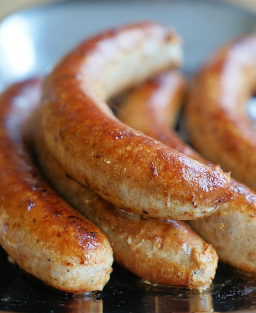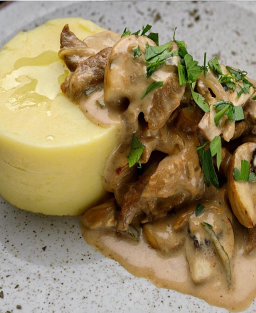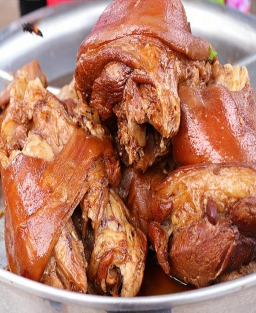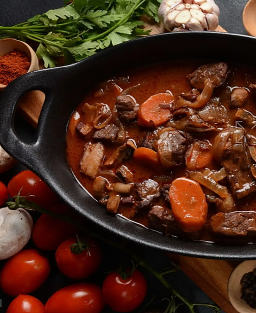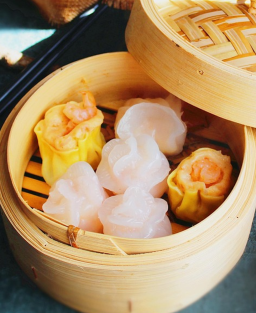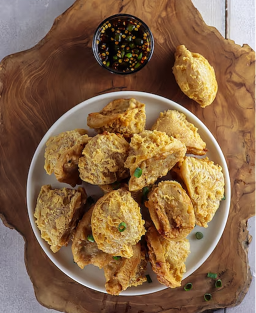- Out-of-Stock
Tandoori Chicken (तंदूरी चिकन) — Murgh with yogurt, spices (मसाले), tandoor, and wood-fired chicken
Tandoori Chicken (तंदूरी चिकन) — Murgh with yogurt, spices (मसाले), tandoor, and wood-fired chicken
Origin and Historical Context
Tandoori Chicken (तंदूरी चिकन) is an iconic dish from North Indian cuisine, particularly from Punjab (पंजाब). Its name derives from the tandoor (तंदूर), a cylindrical clay oven traditionally heated with charcoal (कोयला - koyla). This cooking method dates back several centuries and was mainly used for baking flatbreads like naan (नान) and roti (रोटी).
The Tandoori Chicken we know today was popularized after the Partition of India (भारत का विभाजन - Bharat ka vibhajan) in 1947 by Kundan Lal Gujral, a Punjabi restaurateur who settled in Delhi. He founded the restaurant Moti Mahal (मोती महल) where he introduced this dish made of chicken marinated in spices (मसाले - masale) and yogurt (दही - dahi), cooked at high temperature in a tandoor.
This dish represents a fusion of Mughal (मुग़लई - Mughlai) culinary tradition with Punjabi regional flavors. It quickly became a staple in Delhi restaurants, spreading across India and internationally.
Cultural Significance
Tandoori Chicken is a festive dish (त्योहार - tyohar), associated with family (परिवार - parivaar) and generosity (दरियादिली - dariyadili). It is commonly served at weddings, large gatherings at roadside dhabas (ढाबा) in North India, and various celebrations.
It is also a source of culinary pride for Punjab and a key symbol of Indian gastronomic identity. It exemplifies the Indian cuisine’s ability to blend ancient and modern, local and global, tradition (परंपरा - parampara) and contemporary innovation (आधुनिक व्यंजन - aadhunik vyanjan).
Authentic Tandoori Chicken Recipe (तंदूरी चिकन की पारंपरिक विधि)
Ingredients (सामग्री - saamagri)
-
4 skinless chicken legs (मुर्ग - murgh)
-
200 g full-fat yogurt (दही)
-
2 tablespoons garlic paste (लहसुन का पेस्ट - lahsun ka paste)
-
2 tablespoons ginger paste (अदरक का पेस्ट - adrak ka paste)
-
1 teaspoon turmeric (हल्दी - haldi)
-
1 tablespoon red chili powder or mild paprika (कश्मीरी मिर्च - Kashmiri mirch)
-
1 tablespoon garam masala (गरम मसाला)
-
1 teaspoon ground cumin (जीरा - jeera)
-
Juice of one lemon (नींबू - neembu)
-
1 tablespoon mustard oil (सरसों का तेल - sarson ka tel)
-
Salt (नमक - namak) to taste
-
Natural red food coloring (optional)
Preparation (तैयारी - taiyaari)
Marination (मरिनेशन):
Make deep cuts into the chicken pieces. In a large bowl, mix yogurt (दही), spices (मसाले), garlic (लहसुन), ginger (अदरक), cumin (जीरा), turmeric (हल्दी), lemon juice (नींबू का रस), and mustard oil (सरसों का तेल). Add the chicken and coat thoroughly. Cover and refrigerate for 6 to 12 hours (preferably overnight).
Cooking (पकाना - pakaana):
Traditionally cooked in a tandoor at very high heat, giving the chicken a slightly charred texture. At home, preheat the oven to 240°C (465°F). Place the chicken on a rack over a tray. Roast for 25–30 minutes, turning halfway. Finish under the broiler/grill for a few minutes to achieve a smoky effect (धुआँ - dhuaan).
Serving (परोसना - parosna):
Serve hot, garnished with sliced red onions (प्याज़ - pyaaz), lemon wedges, and raita (रायता). Typically accompanied by naan (नान) or basmati rice (बासमती चावल).
Regional and Modern Variations (प्रादेशिक और आधुनिक रूपांतर)
In India:
-
Malai Tandoori Chicken (मलाई तंदूरी चिकन): A milder version with cream (मलाई - malai), cashew paste, and less chili.
-
Achari Tandoori Chicken (अचारी तंदूरी चिकन): Marinated with Indian pickling spices (achar), mustard seeds, and fennel.
-
Andhra Pradesh Tandoori Chicken: Very spicy, often served with curry leaves and green chili (हरी मिर्च - hari mirch).
Abroad:
-
Tandoori Chicken Wings: Small chicken wings cooked tandoori style, popular as snacks or tapas in modern restaurants.
-
Tandoori Wraps: Used in sandwiches and burgers with mint sauce (पुदीना - pudina) and fresh vegetables.
-
Tandoori Paneer: Vegetarian version using Indian cheese (पनीर - paneer), popular in vegetarian households.
Culinary Heritage and Symbolism
Tandoori Chicken is more than just a meat dish — it is a bridge between multiple traditions. Rooted in Mughal influences, deeply embedded in Punjabi culture, and adapted for international tastes, it today represents the voice of Indian cuisine on the global stage.
It also gave rise to derivative dishes such as:
-
Butter Chicken (मक्खन वाला चिकन - Makkhan wala chicken): Tandoori chicken cooked in a rich buttery tomato sauce.
-
Chicken Tikka Masala: An Anglo-Indian variant with creamy sauce, widely popular in the UK.
Conclusion
Tandoori Chicken (तंदूरी चिकन) embodies the richness of Indian cuisine: its deep history, regional diversity, and openness to the world. A dish of fire, fermentation, and spices, it is both rooted and modern, rustic yet refined. It tells a story — the story of India in motion, balancing ancient heritage and contemporary creativity.











